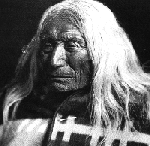
Aboriginal Peoples of Canada
When Europeans first arrived, Canada had an indigenous population estimated at 200,000. In 1986 the Canadian single-origin aboriginal population numbered 373,260. In 1990 there were 598 separate Indian bands located on or having access to 2,284 reserves.
The office of superintendent for Indian affairs in Canada was first established by the British in 1755. In 1860 control of Indian affairs passed to the Canadian government, and in 1880 a Department of Indian Affairs was established, now a part of the Department of Indian Affairs and Northern Development. The primary function of the department is to aid in maintenance of the bands and to encourage full and free participation in national affairs. All effective Indian legislation in Canada is contained in the Indian Act of 1951. All Indians are citizens of Canada; are free to elect band chiefs and councils; may leave reserves at any time; and may participate, with representatives of the department, in running their own social and economic affairs.
About 35% of Canada's Indians live in urban centers: Vancouver, Winnipeg, and Toronto each have Indian populations of more than 20,000. Many of these are "nonstatus" people who suffer the same effects of economic and social poverty characteristic of U.S. urban Indian communities.
Canadian Indians historically have faced strong assimilatory pressure, which many are now resisting. Tens of thousands of "nonstatus" Indians have no significant land with which to affiliate and are seeking redress of their early land losses. A threatened incursion onto land claimed by the Mohawk Indians near Montreal brought a 7-week confrontation between the Indians and Canadian authorities in 1990 prior to settlement of the dispute in favor of the Indians. Throughout the northern reaches of Canada, hydroelectric power development and the search for and exploitation of mineral resources have threatened some native peoples with displacement.
In Canada native peoples legally defined as Indians are known as "status" Indians (those who belong to a band with a treaty with the government or those registered Indians outside treaty areas); all are granted equal benefits and privileges from the federal government. "Nonstatus" Indians are those who have lost their legal status. People in these categories may or may not be of unmixed Indian ancestry. The 1982 Constitution Act defines the aboriginal population as Indian, Inuit, and Metis (mixed), but because of past historical and legal differences, they do not share equal rights. Generally, no continuing Metis rights are recognized under federal law.
- Aboriginal
Highway
- Canadian
Newsletters
First Nations Periodicals
- Centre
for Aboriginal Education,
Research & Culture
(Carleton Univ., Canada)
- Directory
of Resources
- First
Perspective Newspaper
- Native
American Studies
(Univ. of Lethbridge, Canada)
- Native
Languages of Canada
- Native
Education
- Canadian
Aboriginal Youth Net
- Canadian
Museum of Civilization
Gallery exhibit on Canada's First Peoples
- Ojibwe
Language and Culture
- First
Nations Confederacy of
Cultural Education Centres
(FNCCEC) Bulletin Board System
- First
Nation Organization Directory
- Dene
Cultural Institute
(Northwest Territories)
- Native
Education Centre
Information System
- Indian
and Northern
Affairs Canada
- The
Confederacy of Treaty
Six First Nations
- The
Native Community
on The Symbiosis Project,
An Examination of Sustainable
Forest Development in BC
- More
Than Just Land
a web site devoted to the
often thorny topic of Treaty Negotiations in
the province of British Columbia, Canada
Aboriginal Rights Coalition - Victoria
Canadian native community bans alcohol
Canada's Statement at the
11th Session of the UNWGIP
Canada's Statement at the 12th
Session of the UNWGIP - July 1994
Other Canadian Sites